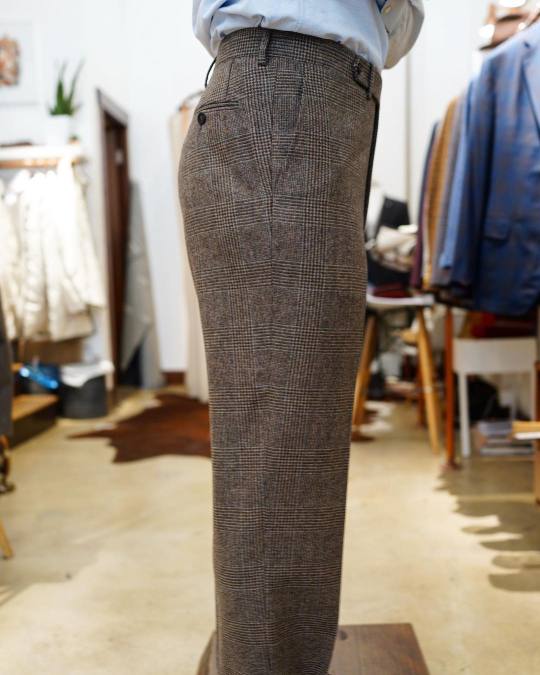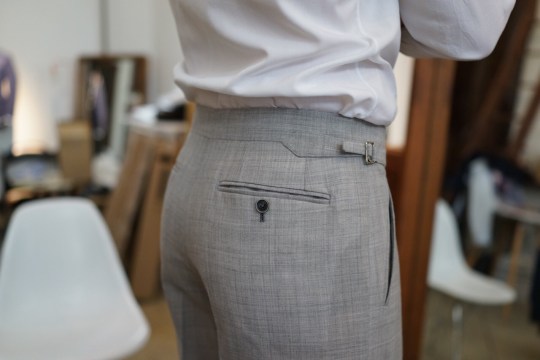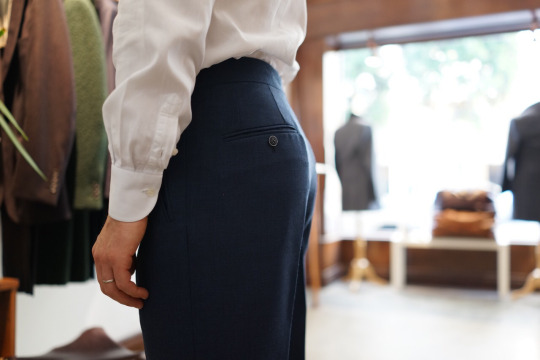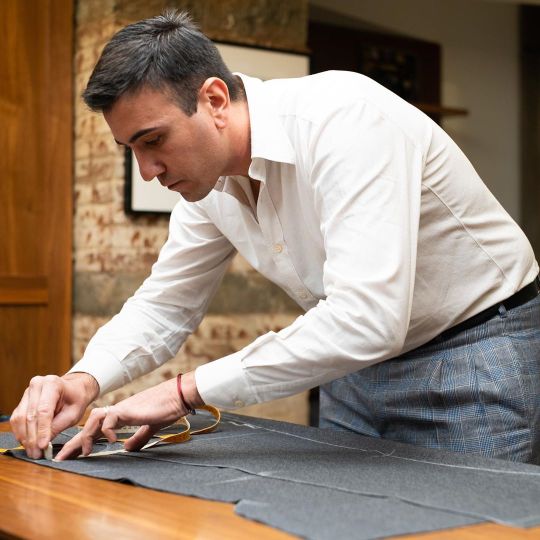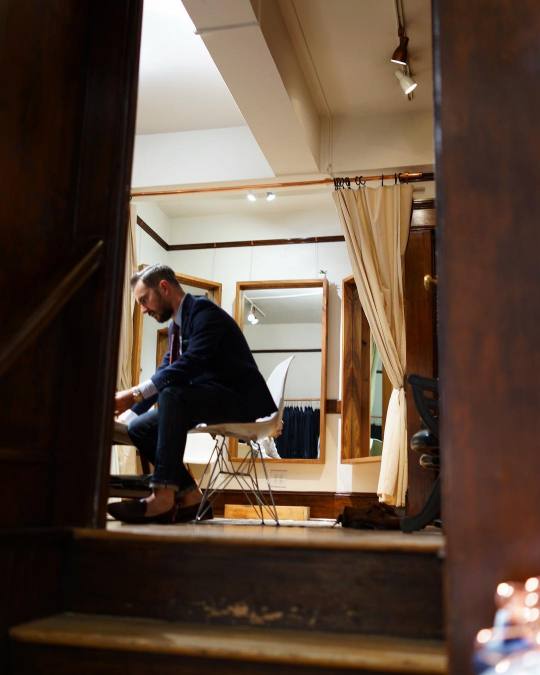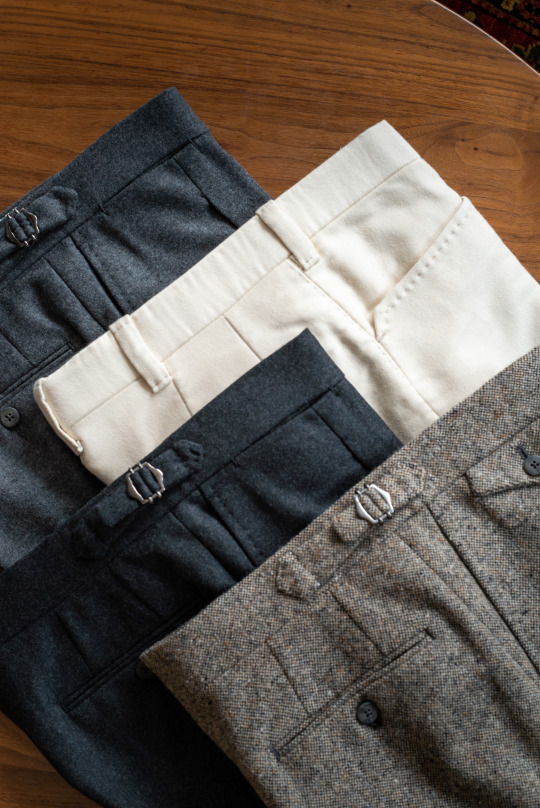
There was a time when I thought buying pants was simple enough. So long as I could comfortably close the waist and the pants didn’t fall down, they fit. Then I learned about Floppy Butt, also known as the “silent killer of silhouettes.” Hidden behind people, unseen without special mirrors, Floppy Butt all too often goes undetected. Truth be told, I still suffer from Floppy Butt — my butt, indeed, is very floppy. But the condition no longer shows up in my pants, which is the important thing.
Floppy Butt is a technical term, not a colloquial one, for when you have horseshoe-shaped folds underneath your seat (a polite person’s way of saying butt, which is rude). The condition is often accompanied by ripples down the back of the legs and fullness around the seat (again, butt, or in the Queen’s English, arse). It can be difficult to spot this at home with a regular mirror. When you crane your back to see how you look from behind, you’ve already distorted your silhouette. Better if you can find a three-way mirror, say when you’re walking through a department store. Or, if you have friends and family members, ask them to inspect your posterior (i.e., seat, butt, and arse).
It brings me no joy to say this, but you probably suffer from Floppy Butt without even knowing it. Much like how a suit jacket hangs from the shoulders, trousers hang from the waistband — and the rise determines where the waistband rests. Swing this delicate balance scale in one direction or the other, and suddenly, things can get distorted. You may have Floppy Butt because your trousers are too large for your pancaked-shaped seat (no judgement, as my seat is inverted like crescent-shaped Florentine lapels). Or, like most men, you stand with your hips forward and knees locked (a posture my friend David describes as Auditioning Male Pornstar).
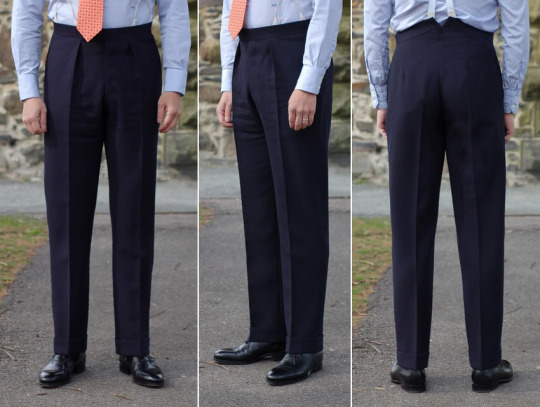
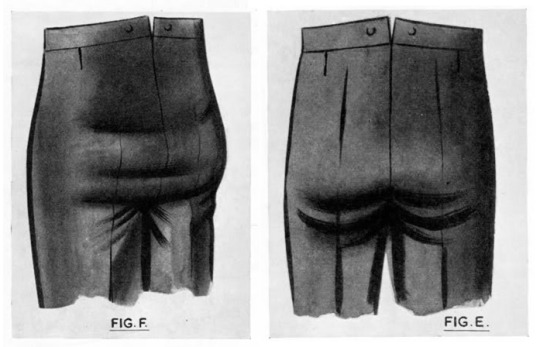
Fundamentally, Floppy Butt happens when your back rise is too long. One bespoke tailor tells me this is because, when a back rise is too short, the wearer can start to feel a bit of tightness at his lap, which is more noticeable than something he may never even see. Jeffery Diduch, Vice President of Technical Design and Quality at Hickey Freeman, says this is half the story when it comes to designing ready-to-wear clothes.
When you’re designing ready-to-wear, if you cut for the average in any given size, then half the men will be smaller, and half will be bigger. You’re far more likely to walk a sale if something is too tight than if it’s too big. Men tend to prefer comfort. And, in any case, you can take in things that are a little too big, but if something is too small, you may be stuck. A short back rise can cause not only tightness in the lap but also wedgies and creeping up the butt, which men really hate. So it is common to err on the side of “too big” or “too long,” rather than “too short.”
One way to solve this is to wear fishtail trousers and suspenders, such as you see on Voxsartoria above. This combination hikes the trousers up from behind. Depending on how much fullness needs to be taken up, I also find that regular trousers with suspenders can cause the pants to hang better (I wear Albert Thurston’s). But for good reasons, many men feel suspenders are fusty, old-fashioned, and cumbersome. Plus, if you don’t wear a suit jacket or sport coat, suspenders can make you look like a hip bartender at an expensive Brooklyn speakeasy.
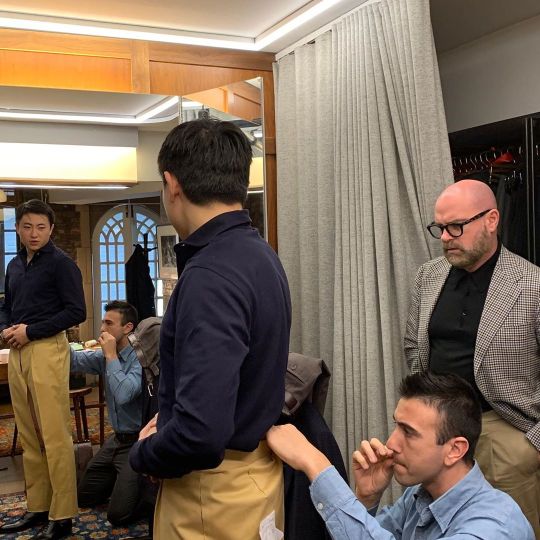
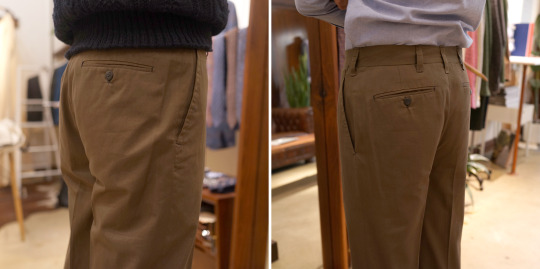
Alternatively, you can have a tailor shorten the back rise. (Lino Pommella, the cutter behind Pommella Napoli, can be seen doing this on a pair of bespoke trousers above, but the process is also possible in ready-to-wear). In these cases, the tailor will pin the seat up closer to the waistband. In doing so, the pants end up sitting at the same place on your waist, but there’s less excess material to fold under your seat.
There’s a catch. When shortening the back rise, you often have to let out the crotch seam, so the crotch point drops down and doesn’t give the wearer a wedgie. This, however, assumes there’s enough material inside (what tailors call seam allowance). Ryan Devens, owner and founder of Tailors’ Keep in San Francisco, says this will depend on the pants. On lower-priced models, such as what you’ll find at Uniqlo, there’s often not enough material inside since manufacturers are trying to save on cost. Higher-end, pants, on the other hand, will. “Rotas from No Man Walks Alone are especially good,” he recommends. “Letting out the crotch independently can also be a way to give someone a higher rise.”
In the photos above, you can see the before-and-after transformation of this kind of alteration. The olive green chinos on the left have a bit of fullness around the seat, crumpling under the butt, and rippling down the leg. Once you shorten the back rise and let out the crotch seam, however, all that gets cleaned up.


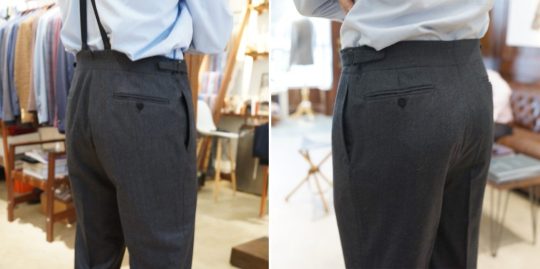
A few months ago, I interviewed Ryan for a post at Put This On about how trousers should fit. Truthfully, that whole post could have been condensed to just Floppy Butt since this is the main issue that, I think, affects everyone. A member at the tailoring forum The Cutter and Tailor once suggested this is because most people are sedentary and spend their entire day sitting down. Consequently, they have weaker leg muscles and need to stand with their hips forward and knees locked to balance themselves. If someone stands like this, and the trousers aren’t cut for their posture, you’ll see excess fabric crumple below the seat and ripple down the back of the legs. Jeffrey, however, notes that trousers are designed this way on purpose — you just need to know how to get it altered if it bothers you.
Getting this adjustment can be a bit expensive since it involves multiple steps. I don’t think it’s that big of a deal in casualwear since casual outfits don’t have to fit perfectly (depending on the style, a bit of rumpling and idiosyncrasy may even look better). But with a well-tailored suit or sport coat, a clean line at the back looks so much better. I’ve had the adjustment done on all my ready-to-wear pants, as well as some bespoke trousers that initially didn’t fit that well. Almost everyone could use a tune-up in the back. Don’t let Floppy Butt happen to you.
Pictured here: Adjustments from Tailors’ Keep in San Francisco, where I go for alterations. I also use them and Pommella for bespoke trousers nowadays. Both companies are great at making slim, but classic, trousers that fit exceptionally well with all the handwork you could want. At the top of this post are also some ready-to-wear pants from this season’s Armoury collection.
